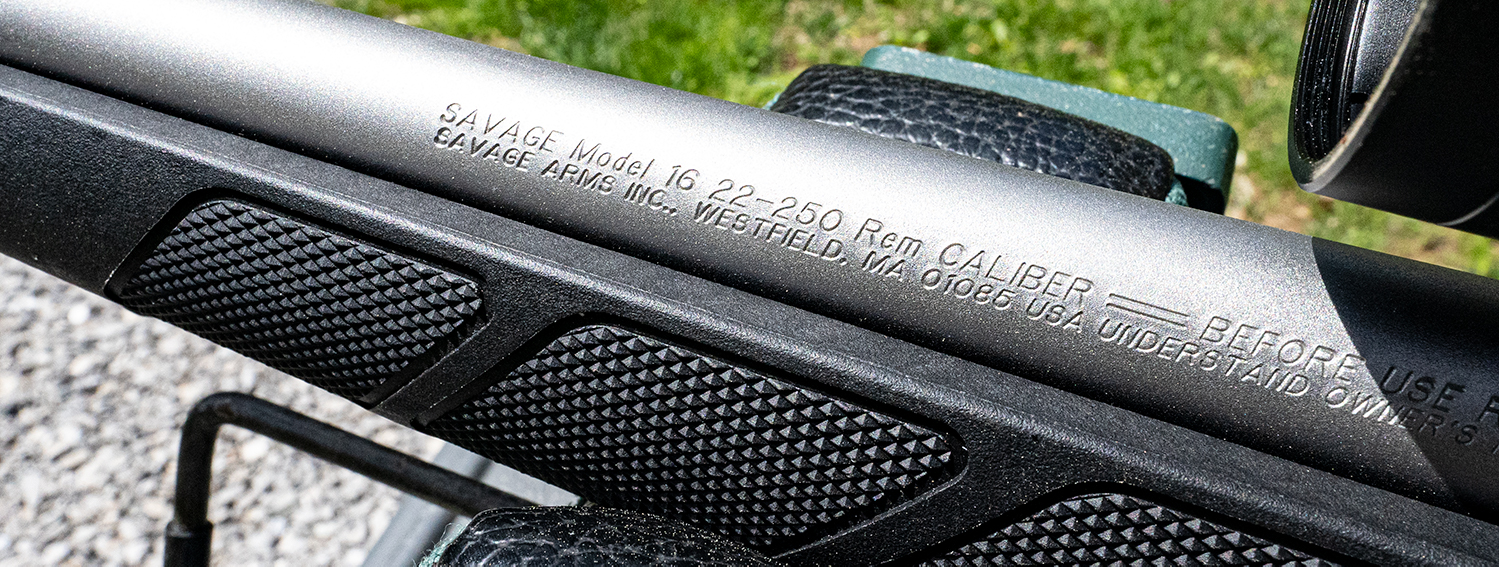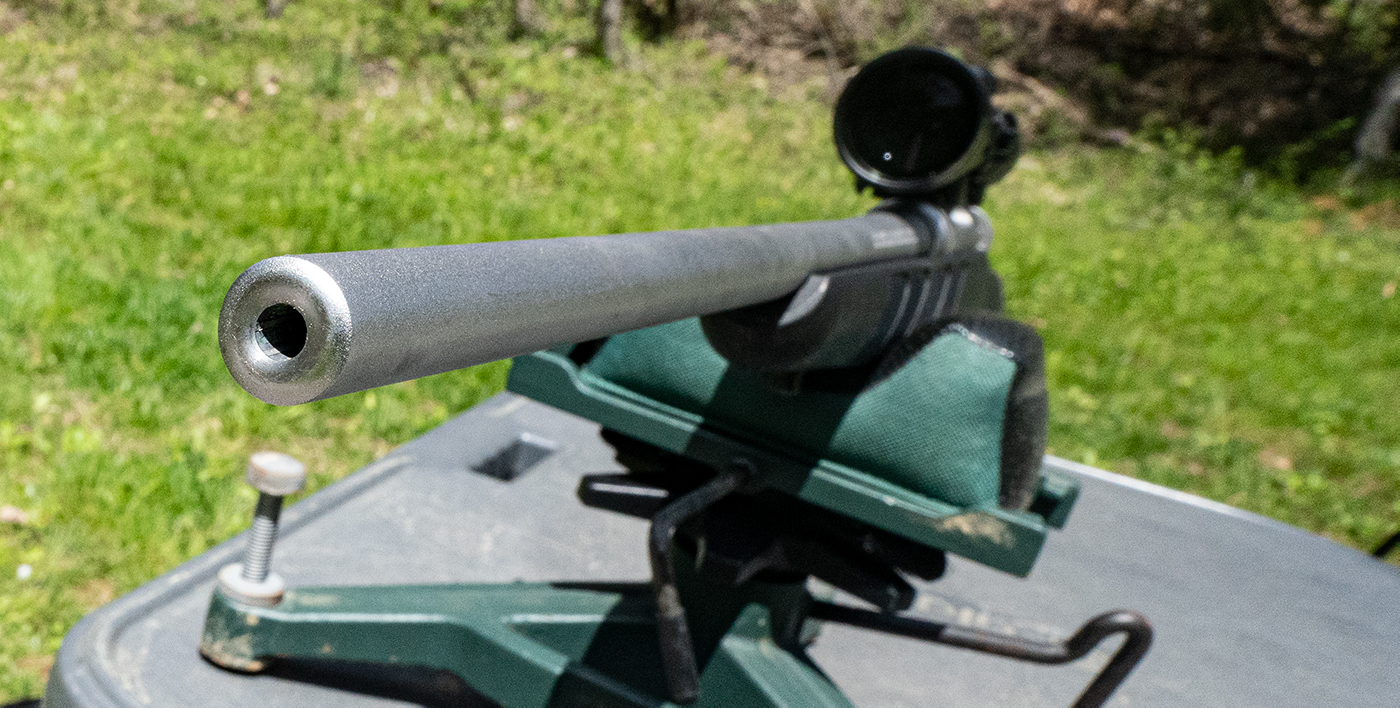A look at how your barrel’s twist rate should impact the bullet weight you select for 22-250 ammo.
The .22-250 Remington is a small-bore cartridge that is effective for small game and varmint hunting. It’s especially popular among coyote and prairie dog hunters, although it can be used effectively for rabbit and squirrel hunting as well. It also makes a fantastic target rifle.
The .22-250’s claim to fame is speed and distance. Relative to the case, it has a small, light bullet that is comparable to the .223 Remington. (Both bullets are .224 inches.) Similar to the .223, the bullet weights are around 40 to 60 grains, with 55 grains being the most common size.
However, the case is much wider. It has a base diameter of .473 inches while the .223’s diameter is .378 inches. The case for the .22-250 Remington is closer to that of the larger .308 Winchester. (Although the case length is different.)
So, broadly speaking, the .22-250 has a bullet diameter of the .223 Remington with a case diameter of the .308 Winchester, creating more force behind a small, light projectile.
The result is speed and distance, with punching power well beyond 500 yards.
Twist Rate: A Quick Review
“Twist rate” is a term that describes the rate of spin inside a gun barrel. Other than smooth-bore shotguns, virtually all firearms have twisting inside the barrel. Known as “rifling,” this internal spiral makes the bullet spin as it travels from the chamber to the muzzle; the bullet will continue to spin as it moves down range.
The spinning created by the internal spiral enhances bullet stability and flight consistency. (Hence, greater accuracy.)
Different bullets need different spiraling for ideal performance, which is where twist rate comes in. Basically, the twist rate describes how many inches the spiral takes to complete one rotation. A 1:16 twist rate, for example, takes 16 inches to complete one rotation. A 1:10 twist rate requires ten inches for a full rotation.
Twist rate has an impact on the performance of all bullets, but understanding twist rate, and aligning your cartridge and bullet with the right twist rate is critical. There are certain twist rates that are ideal for a specific cartridge, but even within a cartridge, different bullet weights will need different twist rates for maximum accuracy, trajectory, and flight control.
For more information on twist rates, see our article that takes a deep dive into this topic.
.22-250 Twist Rate to Bullet Weight Chart
| 1:8 | 1:9 | 1:10 | 1:12 | 1:14 | |
|---|---|---|---|---|---|
| 35 Grain | Poor | Poor | Okay | Okay | Good |
| 40 Grain | Poor | Poor | Okay | Okay | Good |
| 45 Grain | Poor | Okay | Okay | Good | Good |
| 50 Grain | Poor | Okay | Okay | Good | Good |
| 55 Grain | Okay | Okay | Okay | Good | Okay |
| 60 Grain | Okay | Good | Good | Okay | Poor |
| 90 Grain | Good | Good | Okay | Poor | Poor |
Why the Variety of .22-250 Twist Rates?
In previous years, the “best” twist rate for a .22-250 Remington was fairly simple. Most cartridge manufacturers were producing 22-250 ammo with bullets around 50 and 55 grains, with little variety in materials and bullet weights. Therefore, the twist rate from a factory rifles was consistent; the standard rate was 1:12 and there was little variation. Because there was no need for variation.
However, the .22-250 has evolved. It’s become a popular cartridge for handloaders, who can choose from a wide variety of bullets, including larger, heavier bullets, even loads up to 90 grains. So if handloaders are creating custom cartridges, to get the best performance they will need to custom rifle barrel.
In most cases, the heavier the bullet, the more twist (tighter twist) you need. (This means a smaller number in the twist rate; 1:9 as opposed to 1:12) Most heavy bullets require a tighter twist to get them turning enough for reliable downrange performance.
22-250 Twist Rate Chart
Here is a general outline for overall performance between bullet weight and twist rate combinations:
1:8 Twist Rate
This is largely a twist rate that you will only find in custom-ordered barrels, and it is really only good for heavy bullets from the .22-250 cartridge. In general, if you are going to shoot only 90-grain .22-250 bullets from your rifle, this is an effective twist rate. However, if you are going to shoot anything smaller, it won’t deliver the versatility you want.
1:9 Twist Rate
Like the 1:8 rate, 1:9 is only recommended for heavy bullets. However, you’ll likely be able to handle bullets lighter than just the extreme top range of .22-250 bullet weights.
1:10 Twist Rate
This is a more common twist rate, although it’s still fairly tight for the cartridge. If most of your shooting will be around 60 grains, but you want to shoot bullets down to 40, this is probably a strong choice.
1:12 Twist Rate
For .22-250, as well as other .22-caliber cartridges, 1:12 is largely considered the standard twist rate. It performs perfectly for 55-grain rounds, and can handle pretty much everything except the most heavy cartridges.
1:14 Twist Rate
The 1:14 twist rate is also a versatile option, but performance may suffer at the higher end of the weights. If you plan on shooting light bullets for simple target practice, small game animals, or competition, this weight will serve you well.
How to Choose the Twist Rate for Your .22-250?
If you know exactly what bullet you are going to launch from your .22-250 rifle, and you know the typical distance at which you will be shooting, selecting the right twist rate can be fairly simple. But what if you are going to use a variety of bullets?
This may be debated (everything in the shooting industry is, after all!), but many would recommend selecting the tightest twist rate you will need. According to this theory, it’s better to have too much twist (to “tight”) than to have too little.
Under this theory, if you are only going to use only 55-grain bullets, which is essentially the standard load, there’s no reason to go tighter than a 1:12 twist rate. However, if you expect to load and fire 90-grain bullets, then you could equip your rifle with a 1:9 or 1:10 twist; it will give you the performance you need for larger bullets, while also allowing you to shoot 55-grain rounds or even lighter bullets.
Quality Ammo at a Price that Fits Your Budget
If you need a top-quality round for your .22-250, visit ammotogo.com. You’ll find a full selection of affordable ammunition, so place your order today!



